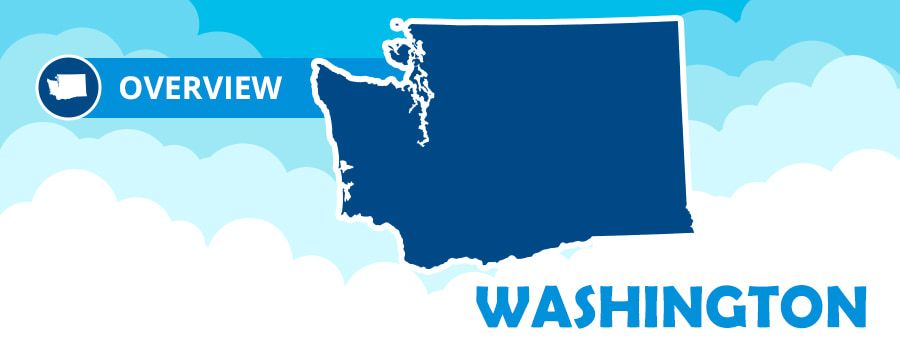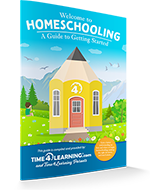Homeschooling In Washington State
Have you begun to think about homeschooling in Washington state? Taking your child’s education in your own hands doesn’t have to be a daunting task. There are plenty of support groups, organizations and information to help you along the way.
We want you to feel confident in your choice to start homeschooling in the state of Washington. Below, you will find information that will guide you in the areas you are likely most eager to know about, including:
- How to Start Homeschooling in Washington
- Washington Homeschooling Laws
- Washington Homeschool Associations
- Washington Homeschool Groups and Co-ops
- Homeschool Field Trips in Washington
- Washington Standardized Testing and Test Prep
- Why Time4Learning is the Leading Homeschool Curriculum in Washington
- How to Build the Best Homeschool Curriculum for PreK-12 in Washington
This information should by no means be interpreted as legal advice. It is your responsibility to interpret and understand the laws that you will be homeschooling under.
How to Start Homeschooling in Washington
In Washington state, homeschool is legal via two different options: under the home-based instruction law or under a private school extension program. For families choosing the first option (the most popular), the steps to homeschooling are as follows:
- Meet qualifications to homeschool (4 ways to do this)
- File notice of intent with local school superintendent
- Teach the required subjects (in Washington state, those are: reading, writing, spelling, language, math, science, social studies, history, health, occupational education, and art and music appreciation)
- Choose curriculum that best meets your child’s needs
- Participate in annual assessments
- Keep records and ensure these include the student’s annual test scores
- Start having fun learning together!
Welcome to Homeschooling Guide
Download this FREE resource where experienced homeschoolers share their stories for how to begin homeschooling, understanding your child academically, planning your days, and much more.
Washington Homeschooling Laws
Under Washington state law, in order to homeschool your child, you must meet one of the following qualifications:
- Have earned 45 college quarter credits
- Complete a parent qualifying course
- Work with a certified teacher one hour per week minimum
- Be “deemed sufficiently qualified to provide home-based instruction by the superintendent of the local school district.”
To find out more about this and other requirements visit our Washington Homeschool Laws page.
Washington Homeschool Associations
Almost every state has at least one statewide organization designed to support home educators, and Washington is fortunate enough to have two of them:
- Washington Homeschool Organization (WHO)
- Christian Heritage Home Educators of Washington
Learn more how you might benefit from joining on our Washington Homeschool Associations page.
Washington Homeschool Groups and Co-ops
Taking responsibility for your child’s education doesn’t have to be a lonely undertaking. Washington’s homeschool population is vibrant and continues to grow yearly. Therefore, there is plenty of support to go around! Explore our Washington Homeschool Groups and Co-ops page to discover what opportunities for networking are available in your area.
Washington Homeschool Field Trips
If you live in the Evergreen State, then you already know how many wonderful opportunities for family activities are at your doorstep. However, you may not have realized how many more chances you’ll have to take advantage of them as homeschoolers! One of the biggest perks of home education is the ability to turn almost any outing into a learning adventure. Our Homeschool Field Trips in Washington list will break down some of the top educational destinations in each region of the state. Please make sure to contact each site before you plan your visit, as COVID-19 may have impacted their hours of operations. Please make sure to contact each site before you plan your visit, as COVID-19 may have impacted their hours of operations.
Washington Homeschooling by City
Homeschoolers in the Evergreen State have tons of opportunities to enhance their child’s education. Check out the different resources available nearest to you:
Washington Standardized Testing and Test Prep
Many homeschoolers in Washington State use an annual standardized test to meet the assessment requirements for homeschoolers. Although never a favorite activity for students, most educational experts agree that testing is a measure of how well students comprehend and apply knowledge. They also agree that high standards are a worthy goal. Time4Learning’s standards-based curriculum builds the skills that students are tested on standardized tests. Find out more about preparing students for annual assessments on our Washington Test Prep page.
Why Time4Learning is the Leading Homeschool Curriculum in Washington
Homeschoolers in Washington state are free to use the program or combination of programs and instructional materials of their choice. While homeschooling already offers a certain level of flexibility, an online curriculum such as Time4Learning allows even more freedom. Because Washington homeschool law requires parents to keep a log of educational activities and records, to teach specific subjects, and to have each homeschooler complete an annual evaluation, you’ll want to make sure you’re adequately prepared for these requirements.
Here are some of the reasons Time4Learning is the leading online curriculum for homeschoolers in Washington:
- Our curriculum engages students and supports their critical-thinking and problem-solving skills.
- Convenient, online homeschool curriculum that combines education with interactive fun.
- Membership includes the core subjects such as math, language arts, science, and social studies. Additional electives are available depending on the grade level of your student.
- Our innovative platform allows students to tap into their creativity as they interact with their learning in multiple modes and with multiple outcomes.
- Time4Learning includes a robust system of record keeping that tracks all your child’s completed lessons, activities, and assessments and makes them available through your parent dashboard. These can be printed or saved to your computer for inclusion in your homeschool portfolio.
- Most students don’t work at a single grade level in every subject. Time4Learning gives students access to the grade above and the grade below in K-7.
- Families receive a standards-based, high quality curriculum at a low monthly fee
How to Build the Best Homeschool Curriculum for PreK-12
Choices for homeschool curriculum in Washington State are completely up to the parents and students. The great news is that families have much more to choose from than typical textbooks, workbooks, and other traditional schooling methods. Online courses, interactive videos, personal computers, laptops, and tablet devices provide exciting and engaging materials for children to experience. But all of these new methods often confuse parents, especially those who are new homeschoolers.
Eventually, parents come to realize that mixing different tools and activities usually keeps their children stimulated and eager to learn. For more information review How to Build the Best Homeschool Curriculum for PreK-12.
Washington Unit Study Supplement
Help your homeschooler learn interesting history and geography facts about Washington in the Time4Learning unit study supplement.
Online Curriculum for Homeschool, Afterschool and Summer Use
In addition to being an award-winning choice for homeschool families, Time4Learning also offers an online after school program to help build your child’s skills. View our lesson demos and discover why thousands of families in Washington are already using it!
Give your student the chance to get back on track or explore exciting electives and get ahead for the next school year with Time4Learning’s online summer school. Our educational materials will engage and challenge your child to succeed.








